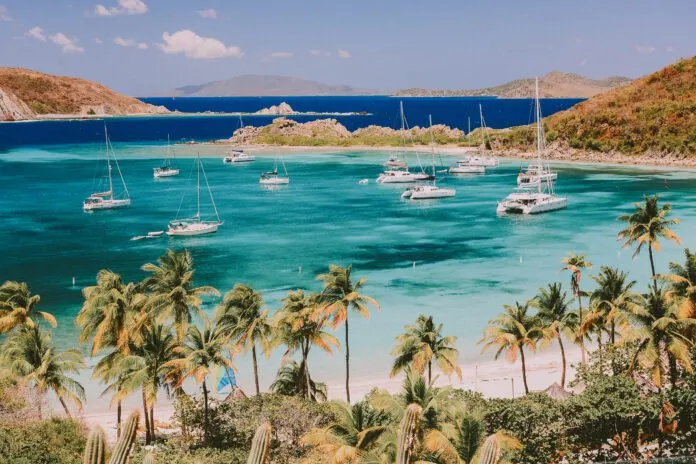
We’ve been bareboat chartering for the last 35 years. Since our first time, boats and the charter companies have evolved and grown in numbers making the choices and process much more efficient. Local service and product providers have also evolved to help serve charter guests. There’s now the option of pre-ordering all the groceries and drinks and having them delivered onboard prior to departure. Charter companies now also introduce you properly to your well-equipped charter boat and perform very informative chart briefings—most charter companies do an excellent job.
Charter companies provide a very easy step-by-step process; however, it is best to plan and prepare ahead of time. To ensure we have the largest selection of boats and available dates, we book at least six to eight months ahead.
There are two types of chartering: “bareboat” where you take full command of the boat, and “crewed” where a captain is onboard with you (they must be paid, fed and given a berth). Some captains may also have a first mate that acts as deck hand, cook and tour guide. There are also a great selection of sail and power boats.
It is also important to note that most charter companies take extremely good care of their fleet, with scheduled regular maintenance and haul-outs. So, do not be deterred from chartering an older boat and save some money at the same time. However, do take time to read up on customer reviews about the company and the boat itself.
CHOOSE A LOCATION BASED ON YOUR SKILL LEVEL
 For this article, I will focus on bareboat chartering a sailboat. But most of the advice will apply to whichever type you’re dreaming of. For example, power catamarans have become very popular in the last decade.
For this article, I will focus on bareboat chartering a sailboat. But most of the advice will apply to whichever type you’re dreaming of. For example, power catamarans have become very popular in the last decade.
Worldwide, each charter region is classified based on the level of experience needed to rent a bareboat in their respective waters. Most of the Caribbean is classified as Level 1 with easiest, line of sight navigation to Level 3, which requires more experience due to longer, more exposed distances between anchorages.
Regardless of experience, for first timers, I recommend selecting a Level 1 location, such as the British Virgin Islands (BVIs). All sailing is within eyesight of land, most bays and anchorages are extremely safe and secure, many offer mooring balls if you prefer not to anchor. Every island caters to the charter industry, so you and your passengers will feel safe anywhere in the BVIs. And no, there are no real pirates, only pirate stories and caves to explore.
Mooring ball bookings. Today, there is also a new website, called Boaty Ball, where you can prebook a mooring ball in the BVIs at your intended destination for that night. So, no rushing to get there or thinking “hope we have a spot.” This is particularly great for those who prefer not to anchor. At time of this article, they have yet to offer an app. So set up your account at Boaty Ball before arriving in the BVIs and add it as a bookmark on your phone or tablet. Get yourself a data plan for the duration of your trip or check with your charter company what they suggest or perhaps offer.
Sailing in the BVIs is great—the water is super clear and warm, swimming and snorkeling is amazing and every island offers up its unique charm, beach bars and restaurants. And the people are amazingly warm and welcoming. The BVIs are also a great destination for families with children.
SAILING RESUME

Charter companies will ask for a sailing resume. You will be required to fill one out provided by the charter company. Some of the information asked will be:
- How many years have you been sailing or boating?
- How many times as captain in charge?
- What size boats have you captained?
- Do you currently own a boat (if so, what make, model and size)?
- How many times have you anchored?
- Can you do minor mechanical repairs if required?
- Have you ever had a boating accident?
- What other related skills or experience do you have?
Needless to say, you must answer these honestly. But remember, regardless of how little experience you may have, the charter company wants to rent you the boat. And since insurance is mandatory on every charter, there is no need to exaggerate your experience. Should anything happen during the charter, such as the boat sinks, the most you would lose is your deposit.
If anyone in your party also has boating or sailing experience, add this information to your booking documents under passenger details. Charter companies will consider the combined experience amongst all guests on board. I always include my wife’s experience with anchoring, grabbing mooring balls, VHF communications, etc.
In rare cases, the charter company may insist on a captain for a half or full day simply to confirm your ability. If this is the case, that is not a bad thing, as these captains are always happy to share lots of local knowledge, which can be a great source of hidden gems or of upcoming local events. Local knowledge is invaluable, especially for first timers in the area.
Case in point, a few charters ago while anchored in the BVIs, we met a local captain working on another boat and he mentioned a “Jump Up” beach party that was going on the next night at Leverick Bay in Gorda Sound. We changed our itinerary in order to be there and it was one of the highlight evenings of that trip with great music, dancing, food and drink. Ever since, we’ve planned the same stop when chartering in the BVIs. Plus, we found out that when you take a mooring ball at Leverick Bay, you get a free water tank fill up and garbage disposal included.
GUESTS OR NO GUESTS?

One important consideration is who will be going. If it’s just you and your first mate, choices and decisions will be easier. If you are going with another couple or friends, decisions such as boat type and size, onboard amenities and budget will have to be considered. In our case, we make sure each couple has their own head. This way, besides privacy, there is no need to clear out your toiletries after each use. In our case, unless we are alone, we book catamarans, so each couple has their very own hull.
WHICH CHARTER COMPANIES ARE BEST?
Search and learn more about the BVIs before your trip—charter company websites are a great source of detailed information. Many offer up recommended itineraries that allow you and your guests to fully appreciate the most popular destinations, and also include suggested activities along the way. Besides electronics like chart plotters, all charter boats include paper charts and local cruising guides for the area, which are a great source of information to read while underway or sailing to the next anchorage.
We’ve used many charter companies over the years and have our own opinion about each one. Some, like Moorings and Sunsail, are international with charter bases worldwide and offer many onsite (base) amenities like a hotel, pool, restaurant, bars etc.
Others, such as Horizon Yacht Charters and BVI Yacht Charters, offer basic services at their bases, which suits us fine, as our goal is not to stay on base, but get out and enjoy our charter (see below for some charter companies servicing the BVIs).
REPEAT CUSTOMER BENEFITS
For the last 20 years, we’ve used mostly Horizon Yacht Charters and BVI Yacht Charters, depending on the destination, boat and date availability. Because we are repeat customers, we do get some extra benefits, which we appreciate, such as a repeat customer discount and free sleep aboard the night before our charter date. So, instead of going to a hotel for one night, we get to unpack and familiarize ourselves with the boat the day/night before. Depending on how early we arrive, we may go do our own grocery shopping that day as well. A run to the local liquor store is definitley involved! Depending on the boat’s availability, most charter companies will offer the night before sleep aboard option at an additional cost, but do ask if you can have it for free. Many will be glad to do so.
FLIGHTS, GROUND TRANSIT AND PRE-DEPARTURE BOAT CHECK

The morning of your first charter day, a mandatory a pre-departure boat check and chart briefing is an important and very informative meeting, normally held onboard your boat prior to leaving the dock. Since we get in the day before, we try and arrange our briefing as early as possible, which normally allows us the opportunity to leave before the normal noon departure time—most charters are from noon to noon.
Once you’ve decided on the destination, the charter company and dates, it is now time to request a pre-booking reservation package. The charter company will email you the “package” which will include the contract with all options, cost and payment structure, as well as the sailing resume form. At this point, you should also be looking at available flights to make sure dates work. Charter companies are well accustomed and remain flexible, adjusting charter dates to accommodate your flights. So, keep in touch with them regularly until both flights and charter dates work for you.
To avoid any stress of possible flight delays, we always book flights to arrive the day before and book our return flights two or three days after the charter. We enjoy staying two or three days at a hotel, resort or B&B to relax a few days before heading home. It makes getting off the boat more relaxing as you’re not rushing to the ferry boat and airport. Also, if your departure flights or connections are delayed for any reason, there’s less stress.
Charter companies will be tracking your arrival flights and will re-schedule the taxi driver accordingly, as well as make arrangements for someone to greet you at the airport, ferry dock or the customs house and bring you to your boat, regardless of how late you get in. So, truly no worries.
When going to the BVIs, flying into St-Thomas (USVI) provides many more airline and flight options. From there, we take the passenger ferry (normally Native Son Ferry Service) from the Charlotte Amalie ferry docks to Road Town, Tortola (BVI). From there, you clear British customs and most charter companies will have a taxi waiting to take you to the charter base.
To save time and money, we also purchase our ferry tickets online beforehand and get the two-way package at a discount.
BUDGETING
| Budget - BVI Sailing trip | ||
|---|---|---|
| 13 days (all amounts are in USD) | ||
| Total cost | Per couple | |
| Airfare (Per person x number of people) | 2,340 | 1,170 |
| Enter boat and boat name, NET 0/night x x nights + free or cost of sleep aboard night before | 6,994 | 3,497 |
| Hull insurance, $0/day x days | 360 | 180 |
| Cancellation insurance | 200 | 100 |
| VISAR fee per charter (mandatory) | 20 | 10 |
| National Park mooring permit $25/week x 2 weeks -even if the second week is partial- (mandatory) | 50 | 25 |
| Cruising tax/permit $4/person/day (mandatory) | 144 | 72 |
| Outboard fuel and gas for dinghy (mandatory) | 20 | 10 |
| Mobile phone (mandatory) | 10 | 5 |
| Taxi from airport to ferry | 24 | 12 |
| Ferry from St. Thomas to Road Town and return 60$/person | 240 | 120 |
| Taxi from ferry to Ritter House Marina, Tortola | 40 | 20 |
| Wine, beer, water, spirits (from Caribbean Cellar) | 450 | 225 |
| Provisioning (from Riteway): for 6 lunches, 5 dinners, breakfast and snacks | 800 | 400 |
| Mooring ball fees: 8 nights at $55 (boatyball.com) and 1 night at anchor | 440 | 220 |
| Fuel top up (diesel for sailboat, gas for dinghy) | 200 | 100 |
| Ice and water top-ups, about $10/day | 90 | 45 |
| Restaurant lunches while sailing (3), drinks ashore (3) : about $35/person x 6 times | 840 | 420 |
| Restaurant dinners ashore while sailing: about $75/person x 5 dinners | 1,500 | 750 |
| Customs at West End after re-entering from USVI $10/person | 40 | 20 |
| Taxi from Ritter House Marina to Ferry to St-Thomas | 40 | 20 |
| Taxi from Ferry to B&B | 40 | 20 |
| B&B in St-Thomas: $0/room + taxes x 3 nights, breakfast included | 2,600 | 1,300 |
| Activities, ferry and taxis in St-Thomas: $30/person/day x 3 days, ferry to St-John $24 each (roundtrip) | 456 | 228 |
| Restaurants in St-Thomas at end of trip, lunch ($35) and dinner ($75):$110/person/day x 3 days | 1,320 | 660 |
| Taxi to airport from B&B | 40 | 20 |
| BVI departure tax, $20/person (paid at Road Town) | 80 | 40 |
| Total cost in $USD: | 19,378 | 9,689 |
| Approximate total cost in $CAD: | 27,308 | 13,654 |
I would be remiss if I did not share a few words about budgeting, especially if you are going with others. Clearly setting out a detailed and realistic budget is critical to the enjoyment of all parties. If the cost of a monohull is best for all concerned, then choose a monohull. If the extra comfort and cost of a catamaran is more acceptable, then go with that. Just remember, you’ll be spending most of your time outside sailing, swimming, snorkeling and enjoying al fresco dining and cocktails with friends, and building great memories. Perhaps you’ll even discuss the next charter destination! You can make a copy of the budget sheet by clicking this link. To make a copy, click “File” then “Make a copy.”
Whether you opt to follow a suggested sail plan by the charter company or you set your own, a more accurate budget can be established when you plan for which meals are onboard and which are ashore, etc. Just remember any sail plan is just a plan and can be changed at any time. So, remain realistic and flexible to changes such as weather, new information or circumstances.
I hope that this info will serve to demystify bareboat chartering and give you the confidence to get this bucket list item checked off. In our case, we’ve checked it off but somehow it keeps popping back up on our list!
A SELECTION OF BAREBOAT CHARTER COMPANIES THAT SERVICE THE BVIS
For more, search: BAREBOAT CHARTER COMPANIES IN THE BVI for a full list and do visit www.BVITOURISM.com
REFERENCES
The Cruising Guide to the Virgin Islands



















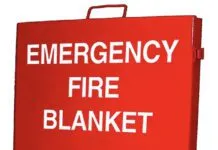




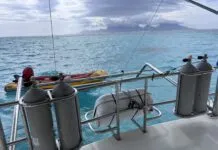
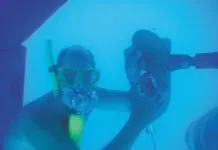


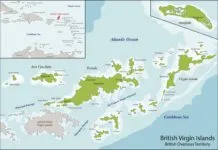





I would add to pick up your own groceries and beverages. One year we were ready to head out but hade to wait an hour for our very late food delivery. Island time!
This is discussed in Part 3, coming up soon
Consider a flight to Tortola. The flight is more expensive, but you will need to add a day to the trip to take the ferry from US Virgins.
We usually do our provisioning at a local grocery store. Like at home, you get to choose the food based on what looks fresh and interesting. On Tortola, there are two large stores walkable from the Moorings marina.
When choosing a charter company, consider the age and condition of the boat. Like your boat at home, things break. Only this time your are dependent on the charter company for repairs. The charter company must be able and willing to send a repair crew promptly.
Don’t count on leaving early on the first day. Take the time to go over everything on the boat so that you are confident you know operate everything. The systems on big cats can be complex. That includes the dinghy and its motor. Check that the water and fuel tanks are actually full.